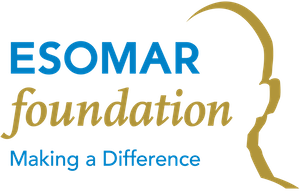Identifying pathways to change behavior in the U.S. healthcare system

5.8 million Americans are living with Alzheimer’s disease. By 2050, this number is projected to rise to nearly 14 million. It’s currently the 6th leading cause of death in the U.S. and kills more people than breast cancer and prostate cancer combined. While early diagnosis can help, only 50% of those living with the disease are diagnosed. And only 16% of seniors receive regular cognitive assessments. To advance the mission of supporting more patients and families battling this disease, a key objective of the Alzheimer’s Association is to help across the health system to achieve earlier diagnosis.
To accomplish this goal, a broader understanding of the Alzheimer’s system was required. To offer this systemic perspective, it was necessary to comprehensively understand how two domains intersect. The first being how families deal with the onset of the disease, pursue diagnosis and make decisions for care between patient and caregiver over time and progression. The second being how and where the primary health care system engages across this landscape.
The research and strategies developed were produced in collaboration with UPSTREAM, an innovation consultancy based in Austin, Texas, USA with significant experience understanding health systems and exploring opportunities for innovation that improve the lives of all stakeholders.
The research was based on system-journey methodology customized for this engagement. This technique leverages visual elements to empower a respondent to provide a rich mapping of the progress they made (or did not make) as they traversed their decisions regarding Alzheimer’s or dementia. The result is a visual map from each respondent indicating the milestones they crossed and elements that served as drivers of progression and those that served as barriers to inhibit them.
This technique was deployed qualitatively across 4 respondent groups. (1) People living with the disease (2) Caregivers in the family/personal ecosystem that are aiding the person living with the disease (3) Primary care providers engaged with patients facing the disease or symptoms and (4) Healthcare system administrators tasked with developing services to respond to patient needs.
Synthesized together, the results from each respondent group formed a singular map of the holistic Alzheimer’s system that revealed how each stakeholder integrates and the role that they play. Ultimately, this resulted in a single perspective with findings that align stakeholders to a common understanding of the challenges and opportunities to drive earlier diagnosis.
The results were further assessed by other stakeholders that validated the framework and prioritized the resulting opportunities for impact.

The research resulted in a new framework to understand the system of Alzheimer’s. This output was the first of its kind in establishing a single reference that revealed the roles of multiple stakeholders and how their interactions with the rest of the system can positively impact those with the disease or unintentionally inhibit them. This framework describes the system-journey of Alzheimers across 6 distinct stages, each defined by a milestone that signifies progress.
Equipped with a new understanding of the system, the research revealed 4 categories of barriers to earlier diagnosis that are currently present in the system – (1) Knowledge (2) Capacity (3) Incentives (4) Beliefs. Specific findings were informed across these categories and indicated how the barrier manifests in the system, which stakeholders are involved, and where they appear across the spectrum of the framework. This provided a specific and actionable landscape of the areas where innovation initiatives could intervene to further achieve the objective of earlier diagnosis.
This research output has allowed the Alzheimer’s Association to advocate for several distinct challenges that the Alzheimer’s community can directly address to achieve earlier diagnosis of the disease and thus improved support and outcomes. These challenges are relevant for the broader healthcare system and provides others with a roadmap for change and clarity on the levers that will be most effective in driving that change. Furthermore, this common framework serves as a basis for defining metrics for the impact that various interventions will provide. The broadest impact may be that for the first time, multiple efforts can be aligned to a common perspective that optimizes the value of resources deployed towards this objective.
Efforts to directly address many of the challenges revealed by this unique research are currently underway at the Alzheimer’s Association, while others are being explored by diverse audiences across the system.
The crisis around this disease is accelerating as 1 in 3 seniors dies with Alzheimer’s or another dementia. On top of this suffering, it’s placing an unsustainable financial burden on the healthcare system and society as a whole. In 2020, Alzheimer’s and other dementias will cost the U.S. $305 billion. By 2050, these costs could rise as high as $1.1 trillion. The U.S. has no choice but to find more innovative opportunities to improve the system of Alzheimer’s diagnosis and care. But before redesigning the system, we need to understand it. That’s the impact that this project brings to the system and our society.
This article is published as an entry for our Making a Difference Awards.
The 3rd edition of ESOMAR Foundation’s Making a Difference Awards are open for entries. This is a chance to applaud and reward the best examples of #marketresearch making a difference to the world’s Charities. Submit your entry here!
